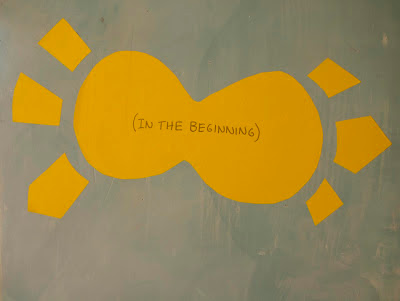The first book by Guy Tillim I saw was
Jo'Burg. Jo'Burg is physically small, an accordion book of urban views of Johannesburg, South Africa, bound in stiff boards. The images are of a derelict spaces occupied by an urban poor who have moved in to what had been a bourgeois modern metropolis. Johannesburg looks remarkably like our cities in the US which have followed paths of expansion and collapse. If there is a spectral aspect, a sense of a lost past, it is in a sense of prosperity and progress, inscribed in the now grimy, unkempt architecture.
What appeals to me primarily in this work is its delicacy in terms of depicting habitation, its lack of sensationalism in terms of dealing with individual instances of poverty. Compared to a document such as Bruce Davidson's
East 100th Street, it is downright cool. In Davidson's book, the lush, intimate photographs become their own parallel universe of community, cohesion and sentiment. In Tillim's images the sterile, generic architecture overwhelms us in its wrecked indifference to the difficult lives it contains. The architecture enacts a historical narrative by itself, as a container.
The built environment assumes an even greater presence in Tillim's book
Leopold and Mobutu, which documents the physical residue of Leopold II of Belgium and Mobutu Sese Seko in the Democratic Republic of the Congo, following their stewardships of the country. The traces of monuments, bureaucracies, names on a land appear as metaphoric lash marks of history as disaster: looking back, it is one big catastrophe. In contrast with
Jo'Burg which can still be read as a more conventional form of journalism,
Leopold/Mobuto involves looking at that which is now discarded or concealed - it explores detritus as potential evidence of retrospective horrors, gussied up in monumentality, which now litters the world in fragments, a post-colonial Ozymandias.
Architecture as a scaffold of history is even more apparent in Tillim's book
Avenue Patrice Lumumba, which I saw as an exhibit this past winter at the
Weisman Art Museum at the University of Minnesota. The title itself alludes to both the nomenclature of post-colonial self-rule in southern Africa, transposed in street names, as well as one its first tragedies, the imprisonment and execution of Patrice Lumumba.
Avenue Patrice Lumumba shows the remains of a not-so-long-ago colonial architecture in the Democratic Republic of the Congo, Mozambique, Madagascar, Angola - generic modernist structures which in the West appear as universal, ahistorical, totalizing, in a perpetual present tense: a modernity from which there is no going back. In Tillim's images the decayed remnants of colonial organization have been adapted and retrofitted. It has always seemed to me that modern architecture is not meant to age or decay, and when it does it looks similar to ruins - Pompeii or Herculaneum.
The potential of such ruins in contradistinction to our mortal lives comes up in a brief scene in the Rossellini film
Voyage to Italy, of tracking shots of antiquities in the museum at Naples, in contrast to the domestic abyss wrought by Ingrid Bergman and George Sanders - how small they seem compared to a sense of eternity. The same edit is invoked in Godard's Contempt, with the film within the film, The Odyssey, directed by Fritz Lang.
But in consideration of Tillim's photographs, such a sense of the eternal becomes unmoored, it seems so Western. Instead I think of a remarkable video I saw several years ago by the Stalker Group, about a 1970s housing complex on the outskirts of Rome,
Corviale. Considered a disaster, Corviale has nevertheless evolved its own infrastructure, its own communities within the superstructure of the architecture. These pragmatic movements seem the truly radical gesture. In Tillim's photographs, in their somber colors and lighting, one can see, nevertheless, a movement towards autonomy.














